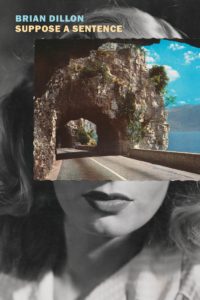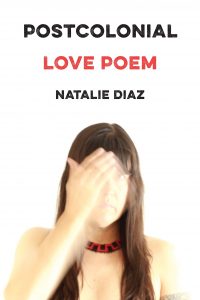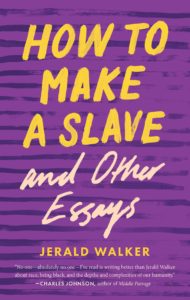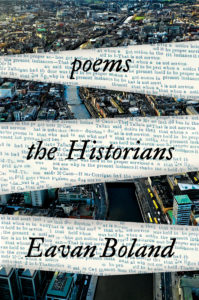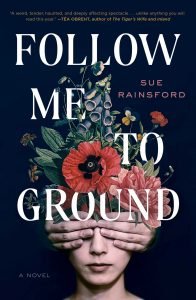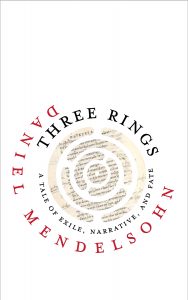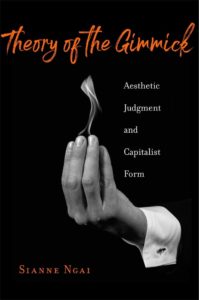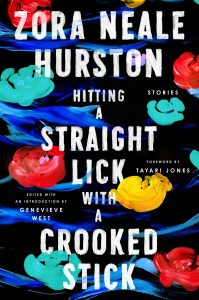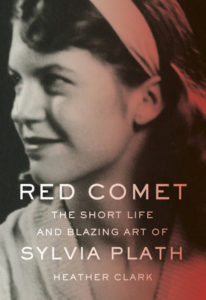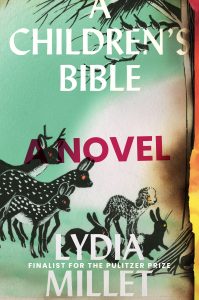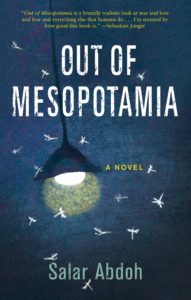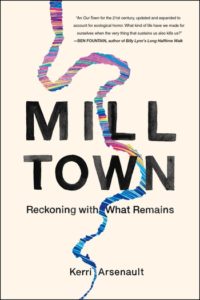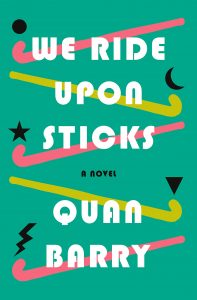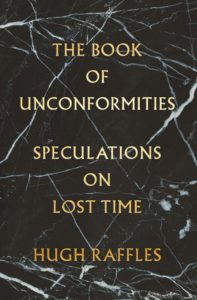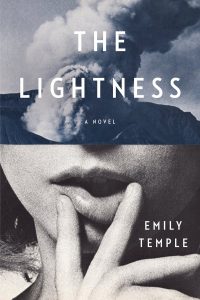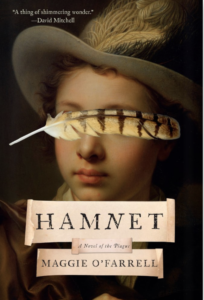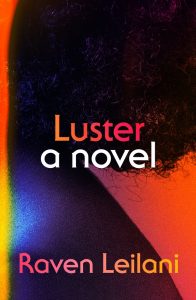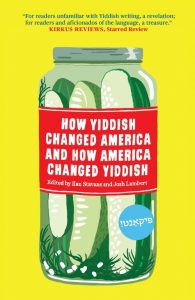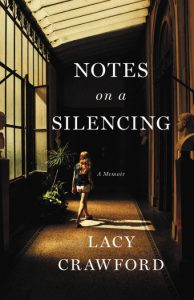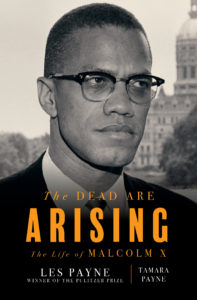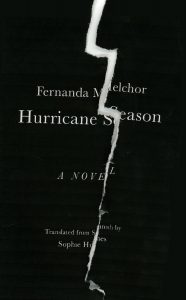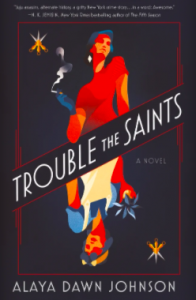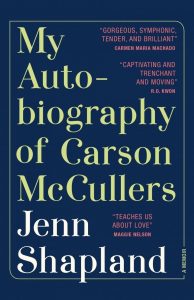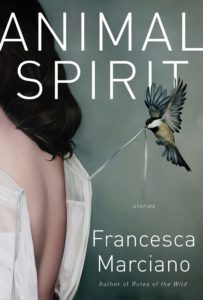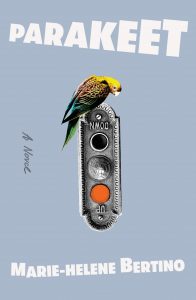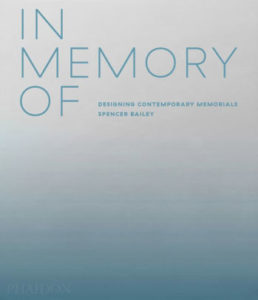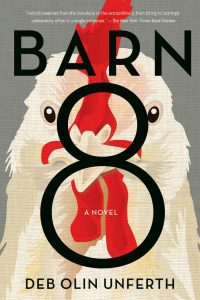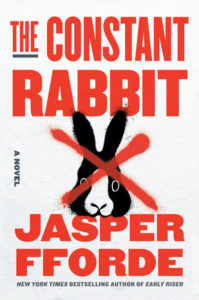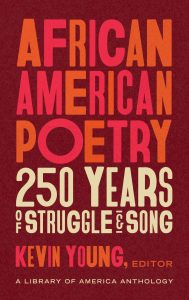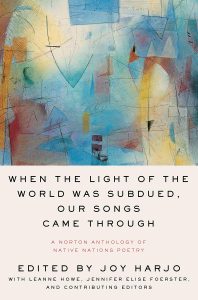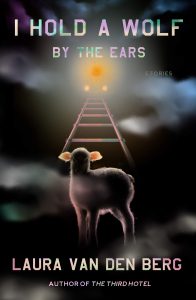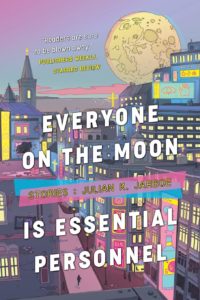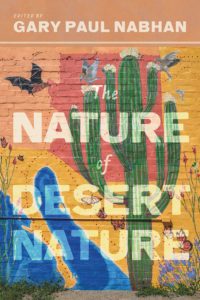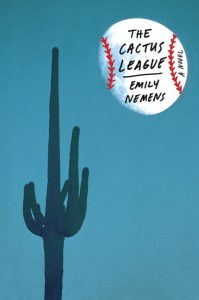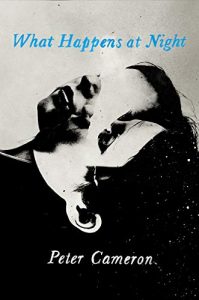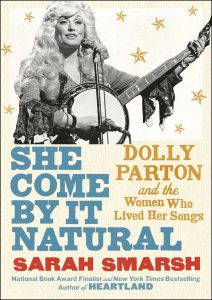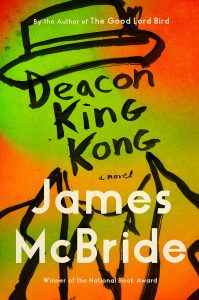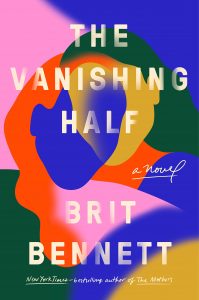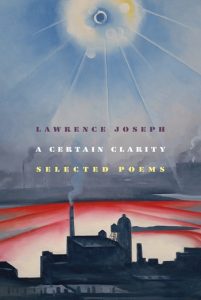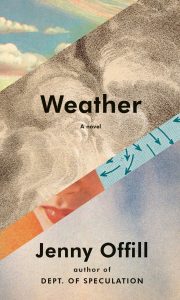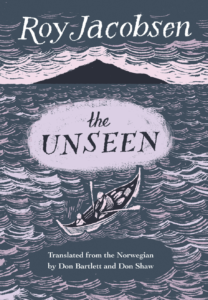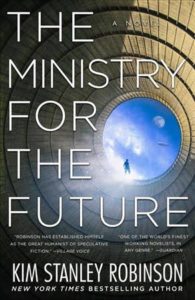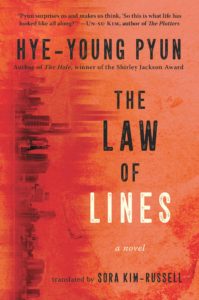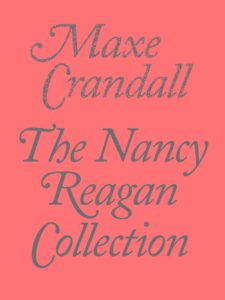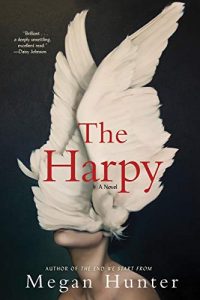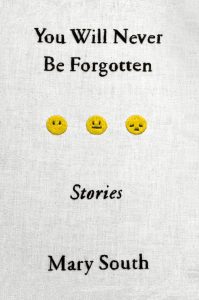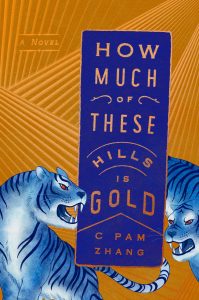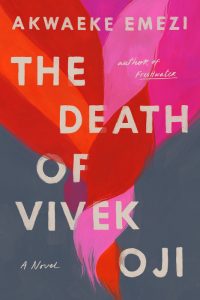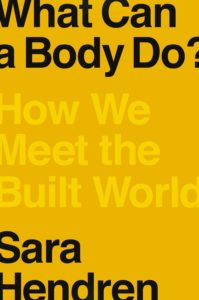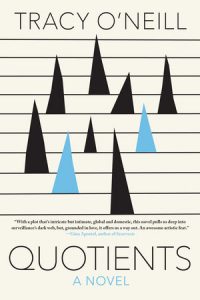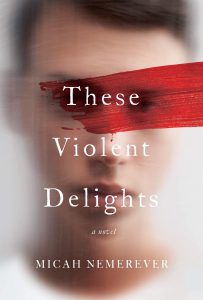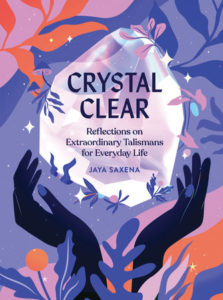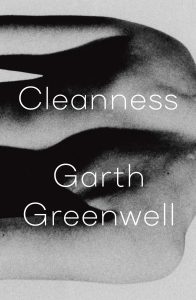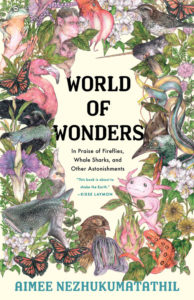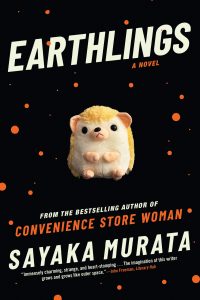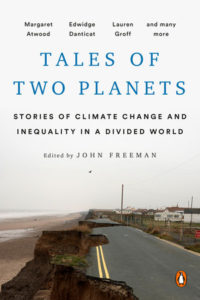In the year of our lord 2020, there was a devastating pandemic. Americans impeached and then ousted a tyrant from the highest office in the land. Wildfires raged in Australia and California. Prince Harry and Megan Markle quit the royal family. Parasite got its due at the Oscars. Taylor Swift sold millions of cardigans. We lost Ruth Bader Ginsburg and Eddie Van Halen and Diego Maradona. We met the Fleetwood Mac skateboard guy and Sarah Cooper. Americans took to the streets to protest police brutality. Substack took over our inboxes. Baby Yoda took over our hearts. Kamala Harris became the first woman and woman of color to be elected vice president. Harvey Weinstein was convicted. The economy tanked. We all had to buy ring lights. We all got obsessed with Connell’s chain and illusion cakes. We all watched every TV show ever created and then complained about them on the internet. Murder hornets added insult to injury. Stanley Tucci’s cocktails soothed our souls a little.
And also, we read a lot of books. Here are some of our favorites.
Brian Dillon, Suppose a Sentence (NYRB, September 22)
“The truth is,” Dillon writes in the introduction to this marvelous little volume, “I wanted to write a book that was all positives, all pleasure, only about good things. Beautiful sentences, Gass wrote, as “rare as eclipses.” I went chasing eclipses.” Well, he succeeded: this book is indeed all pleasure for anyone who loves the sentence; and might even be useful as a map for those who want to know what the fuss is all about. Dillon writes with passion and a sharp intelligence about these twenty-seven samples from the work of James Baldwin, Joan Didion, Fleur Jaeggy, and others; the result is frankly ecstatic. –Emily Temple, Managing Editor
Natalie Diaz, Postcolonial Love Poem (Graywolf, March 3)
This was an important book for me in 2020, not least because it brought together three of my favorite things: sex, geology, and basketball. This may sound a little glib in reference to such an important work—Postcolonial Love Poem was deservedly shortlisted for a National Book Award, and was my pick—but it gets at Diaz’s eerie genius for navigating disparate vocabularies (and here it is hard to avoid metaphors of deep canyon rivers or stifling zone defenses) to do that thing all poets aspire to but few truly can: reveal the flickering underglow of life’s hard and wondrous moments, light and meaning where otherwise is darkness.
Poetry is personal for me so when I say this book was important I mean that I read each poem into the small, glowing device in my hand and sent them away 10,000 miles to the person I cherish most in the world, from whom I have been separated by a global pandemic. For us, this collection will forever be the atlas of a lost year, each poem a little map back to those moments in which we imagined what love might be at a distance.
For Diaz, Postcolonial Love Poem is quite clearly a love letter, with all that entails: ardent metaphors of desire (“I will enter the door of your throat, / hang my last lariat in the hallway”; “At night your legs, love, are boulevards / leading me beggared and hungry to your candy”); expressions of the overwhelming need to be known (“And even though you said today you felt better, / and it is so late in this poem, is it okay to be clear, / to say, I don’t feel good”); and promises to love and be loved (“In me a pack of wolves appeared and disappeared / over the hill of my heart. / I, too, follow toward where I am forever-returning— / Her.”)
But it is more. Diaz’s love is big, and it expands throughout the collection to include more than a love letter ever could: the land of her people and its riverine contours (she is enrolled in the Gila River Indian Community and identifies as Akimel O’odham); her brother, a basketball prodigy who struggled with addiction; the sport of basketball itself, a sacred space for Diaz where grace and bravery are in a perpetual state of renewal, a necessary refuge from the colonizers forever surrounding the ones she loves.
“Favorite of the year” seems an impoverished way of describing a book that will stay with me down through whatever years I have left. –Jonny Diamond, Editor in Chief
Jerald Walker, How to Make a Slave and Other Essays (Mad Creek Books, October 30)
Nimbly hopping with wit and warmth and wisdom, Jerald Walker takes us on a captivating dance, making sharp, fluid turns from the intimate to the grand—the self, family, vocation, disability, race. With disarming acuity, he beckons us to see afresh with a collection of essays that’s as much a delight for its humor as for the beguiling movement of his brilliance. This is the essay as rubber band—able to stretch and twist and loop and contract, only to snap back to a form more expansive. Here’s a sparkling collection to laugh with, think alongside, and return to often. –Garnette Cadogan, Contributing Editor
Eavan Boland, The Historians: poems (W.W. Norton, October 13)
Boland’s writing, intricate and beautiful as lace, sturdy and exquisite as linen, is at its best in these poems. It was an honor to have had her as a teacher in 1970s Ireland and it is an honor to recommend this volume as a year’s best book. I offer her words back to her memory as prayer: “Your words disturbed my earth. They changed my mind. / Whatever a dead poet could have I wish for you.” A beautiful collection. –Lucy Kogler, Staff Writer
Sue Rainsford, Follow Me to Ground (Scribner, January 21)
Irish author Sue Rainsford’s remarkable debut novel is an intoxicating blend of magical realism, dark fairytale, and uncanny body horror that explores—in lush, lyrical prose—the nature of desire, discovery, and humanity. Follow Me to Ground is the story of an otherworldly young woman, Ada, who lives with her father on the edge of a village, where together they crack open or bury in the ground the damaged bodies of locals in order to heal them. When Ada, against her father’s warnings, begins an affair with a local named Samson, the world as she understood it begins to unravel and decay. A haunted, sensuous gem. –Dan Sheehan, Book Marks Editor
Daniel Mendelsohn, Three Rings: A Tale of Exile, Narrative, and Fate (University of Virginia Press, September 8)
In Three Rings, Daniel Mendelsohn illuminates and intertwines the lives of a French archbishop, a Jewish philologist, and author WG Sebald, while simultaneously exploring the prejudiced boundaries of storytelling itself. While formulating cultural and literary criticism, history, scholarship, and memoir in tight, interlocking narrative loops, he reveals how the firewalls of narrative can mirror the connecting circles he experienced in his personal life and in the three exiled writers in his book’s grip… because journeys do not always have a neat beginning, middle or end. Deeply considered, this small, mighty book contains more ideas, more heart, and more history than books four times its size. –Kerri Arsenault, Contributing Editor
Sianne Ngai, Theory of the Gimmick: Aesthetic Judgement and Capitalist Form (Belknap, June 16)
Sianne Ngai is one of the most creative humanities scholars working today—a professor in the English department at the University of Chicago, her research largely concerns the relationship between our aesthetic categorizations and capitalism, offering insight into how they index our understandings of labor, time, and value. Her first book, Ugly Feelings, concerns “non-cathartic” sensations like envy, disgust, paranoia, and irritation and how they reveal ideological approaches to art, which is often thought of as non-threatening. In her next book Our Aesthetic Categories: Zany, Cute, Interesting, she studies how these labels, all qualifying affective performances, reveal our understandings of production, consumption, and circulation.
Conversely, her newest book, Theory of the Gimmick: Aesthetic Judgement and Capitalist Form, concentrates on only one type of thing: the “gimmick”—a ubiquitous concept which contains multitudes. A gimmick is either a hook or a con, (to quote the book’s own summary): “working too little (a labor-saving trick) and… working too hard (a strained effort to get our attention).” More often than not, the gimmick equals some sort of “cheap trick,” and with this in mind, Ngai sets off on another mind-blowing exploration, this time drawing a line between our own judgements of productivity, as well as considering what entertainment is worth to us. My god, it’s so good. –Olivia Rutigliano, Lit Hub and CrimeReads Staff Writer
Zora Neale Hurston, Hitting a Straight Lick with a Crooked Stick: Stories (Amistad, January 14)
Over the past four years, we’ve been lucky to witness the publications of Zora Neale Hurston’s archived work. In 2016, Amistad Press released Barracoon, an account of Cudjoe Lewis, one of the last remaining survivors of the Middle Passage, and, earlier this year, Hitting a Straight Lick with a Crooked Stick, a collection of short stories found from displaced periodicals, which Hurston wrote during the 1920s. Hurston’s collection, named after one of the South’s most common maxims, features stories that navigate the tensions between Black individuality and togetherness, freedom and captivity, along with gender, class, antiblackness, and migration. Hurston certainly had a gift for short fiction and an ear for the musicality of language. Each story charts the finer contours of Black life and folk culture, and her stories end not with conclusions but with beginnings. –Rasheeda Saka, Editorial Fellow
Heather Clark, Red Comet: The Short Life and Blazing Art of Sylvia Plath (Knopf, October 27)
In a recent essay about Red Comet, Heather Clark’s stunning and massive new biography of Sylvia Plath, Emily Van Duyne, an assistant professor at Stockton University and Plath scholar, points out that “Most big Plath projects arrive with a flurry of press asking what more can be said about her.” This one was no exception—even a recent review of Red Comet in The New York Times remarked, “One would think there is little to be added” to current scholarship on Plath, noting the “avalanche” of biographies that followed her death, which established her as a mythic, almost otherwordly figure in the American literary imagination. It is, of course, an unnecessary and offensive question; there’s more to this story, much more. Clark’s unique access to archival materials, her deft and detailed writing, and her compassionate treatment of the more sensitive details of Plath’s story are only a few of the features that make this biography a remarkable achievement. Above all, Clark succeeds in presenting a full, deeply human picture of a genius who worked to fulfill her uncompromising poetic vision every single day. –Corinne Segal, Senior Editor
Lydia Millet, A Children’s Bible (W. W. Norton, May 12)
Beloved writer Lydia Millet is perfectly poised to write an allegory for these dark days. Her new novel, A Children’s Bible, follows a group of children on vacation with their parents. Something strange is happening at the lakehouse. A series of events occurs that eerily mirrors the Bible. A lot of the reviews have pointed to Lydia Millet’s background in environmental policy, calling this a timely cli-fi novel. True, natural disasters abound in this story, but she pushes it one step further. In this story, as the days draw on, the parents are lost to a haze of booze and drugs, rendering them completely useless and apathetic. The children—witty, mature, resourceful—are left to fend for themselves. Lydia Millet is a master at mimicking the games that children play and turning them into something much seedier. A Children’s Bible serves as a haunting warning against the abandonment of our earth, our young, and our hopes for the future, told with Lydia Millet’s signature sardonic humor. –Katie Yee, Book Marks Associate Editor
Rumaan Alam, Leave the World Behind (Ecco, October 6)
Rumaan Alam’s third novel, which was was shortlisted for the National Book Award, is a new type of disaster novel. Amanda and Clay, a white couple, head to an isolated house on Long Island with their teenage children for vacation. But late at night, an older Black couple, G.H. and Ruth, the owners of the house, arrive in a panic; there’s been a blackout in the city and something bad is happening. Times push notifications alert them to more disturbing details—the blackout has hit the entire East Coast and there’s a hurricane making landfall. Though the tension rises (and rises!) at an almost thriller-like pace, the disaster remains unknown. Instead, the pressure ramps up inside, focused almost claustrophobically on the couples. They lean into middle-class comforts like baking or laundry, painting such a clear and accurate understanding of what terror and horror is today; in light of the disaster of modern society, we know things can and will get worse. Alam has crafted a smart and sharp exploration of fear. It’s also, ironically, the perfect read when you’re stuck at home and a little afraid of the outdoors. Plus, Julia Roberts and Denzel Washington are signed on to star in the adaptation, so you’ll get the unique pleasure of loving a book and watching the movie in a few years, and the movie might actually be good! –Emily Firetog, Deputy Editor
Salar Abdoh, Out of Mesopotamia (Akashic, September 1)
Critical language around novels of war too frequently drifts into cinematic vernacular. This is not surprising: most of us who haven’t experienced conflict firsthand know it mainly as a story told on film. Salar Abdoh’s Out of Mesopotamia—much of which is based on his own experience embedding with Shia militias during the Syrian Civil War—resists breathless narrative sweep and instead lures the reader again and again into a feeling of intoxicated dislocation. This is part of the novel’s brilliance.
Told from the perspective of Saleh, a writer-slash-journalist-slash-nihilist who can’t outrun his own decency, Out of Mesopotamia veers from the sidewalk cafés of Teheran to the war-ravaged hinterlands of Iraq, introducing us to an incredible gallery of characters. Wry warrior-clerics, venerable art stars, backstabbing documentarians, fixers-with-a-heart-of-gold… Abdoh makes such deft sketches of his secondary characters it is easy to imagine their lives offstage, fully lived and ongoing, as we follow Saleh from painful opening parties to deadly firefights.
If history is written by the victors than most good war novels are written by those accustomed to losing, and Out of Mesopotamia calls to mind the grim brilliance of Czech writers like Bohumil Hrabal and Jaroslav Hasek—which is to say it is really fucking funny. And maybe this is at the heart of Abdoh’s genius, the art and instinct for getting very close to the darkest corners of humanity without succumbing to the despair that dwells therein. –Jonny Diamond, Editor in Chief
Helen Macdonald, Vesper Flights (Grove, August 25)
I really can’t stand when animals are used as metaphors, so I loved Helen Macdonald’s H is for Hawk, which is a story that at first glance might seem as though it could do that, but flatly does not. Following the death of her father, Macdonald, a professional falconer, seeks to train a particularly dangerous hawk. But her relationship with the animal isn’t an excuse for personal reflection or a facilitator of grieving; it’s its own kind of life, entirely, it’s own relationship, free of human hang-ups and thought spirals, and debunking the primacy of common human opinions about nature. I anticipated that Vesper Flights, an essay collection about humanity and nature, would succeed in the same vein and it does. I can’t better articulate how Vesper Flights triumphs than Parul Sehgal in The New York Times Book Review, who noted that Macdonald’s writing provides “an antidote to so much romantic, reductive writing about the natural world as pristine, secret, uninhabited—as a convenient blank canvas for the hero’s journey of self-discovery.” Yes, indeed! In both of her books, Macdonald both observes and participates in nature in a manner which is free of philosophical entanglements. She meticulously and devotedly presents complicated facets of the natural world, not to do lofty things with them, but to appreciate them for what they are.–Olivia Rutigliano, Lit Hub and CrimeReads Staff Writer
Kerri Arsenault, Mill Town: Reckoning With What Remains (St. Martin’s Press, September 1)
Reportage, memoir, and the refusal to seek easy answers clasp hands to bring us a searing, compassionate story of people rooted in and committed to a place that keeps breaking their bodies and hearts. A paper mill, the very thing that has been a source of prosperity in Mexico, Maine, is a cancer factory, and the story Kerri Arsenault tells of it and those it employs and harms is the story of so many of us—longing to escape horrid situations but fated to them by the supposed means of our escape. With love and sorrow, wed by eloquent prose that moves with keen pacing, Arsenault traces the story of her family and the many families who have been battered along with their despoiled environment. This book is an essential answer to the urgent question: “At what cost comes progress?” –Garnette Cadogan, Contributing Editor
Quan Barry, We Ride Upon Sticks (Pantheon, March 3)
In Barry’s second novel, a high school field hockey team turns from losers to winners thanks to a dark pact made in an Emilio Estevez notebook. Because, you see, this is Danvers, Massachusetts, the original site of the 1692 witch trials, and even more importantly, it is the 80s. Witty, sly, and kind of dorky, just like you were (probably) at sixteen, this book is like an epic sleepover with too much popcorn, or maybe it’s like sinking into a bath. A scented, rubber duckie-filled, super 80s bath. All jokes aside, I don’t think I’ve had this much fun reading a book since I was 16 myself—in a year like this one, I’m doubly grateful for it. –Emily Temple, Managing Editor
Hugh Raffles, The Book of Unconformities (Pantheon, August 25)
Nothing I read in this year of strange and disjointed time resonated with me as profoundly as Hugh Raffles’s haunting meditation on grief and stone. The Book of Unconformities is not a straightforward study of geology or memoir of loss; it’s not even a straightforward entwining of the two. Raffles, an anthropologist, fashions a set of narratives that blur boundaries and disciplines through digression and exquisitely long sentences that render the world, as in W.G. Sebald’s novels, simultaneously clarified and enshrouded. I hope more people come to this book. It is a masterpiece. –Stephen Sparks, Contributing Editor
Emily Temple, The Lightness (William Morrow, June 16)
Emily Temple’s razor-sharp, darkly-sensuous and psychologically-nuanced coming-of-age tale—about a troubled teenager who enrolls in a mountainside spiritual retreat in order to find out what happened to her missing father, but ends up falling in with a trio of girls hell bent on mastering the art of levitation—is one of the most enrapturing, dazzlingly-executed works of literary suspense I’ve read in years. I defy anyone to read the first few pages of The Lightness and not be swept away by the acerbic wit, fierce intelligence, and hypnotic musicality of Temple’s sentences. –Dan Sheehan, Book Marks Editor
Maggie O’Farrell, Hamnet (Knopf, July 21)
Maggie O’Farrell’s imaginative biography, the Women’s Prize-winning Hamnet, traces the young life and tragic early death by plague at age 11 of its eponymous subject, the only son of William Shakespeare and Anne Hathaway and the near-namesake of the elder Shakespeare’s most famous and most tortured work. Shakespeare himself, away working and never mentioned directly by name, is mostly absent from the novel, which instead unfolds mostly between women and between Hamnet and his twin sister Judith. It’s rich in imaginative sympathy and at times almost unbearably sad. It is also packed with passages of stunning technical virtuosity, the narrative slipping frictionlessly among the perspectives of adults and children, even animals, and over swathes of time and space (including in one stand-out sequence tracking the movements of a plague-infected flea from Alexandria towards London).
In the details—the smells of an English country summer, the feel of subcutaneous plague buboes palpated by terrified fingers—O’Farrell has a near-alchemical possibility to conjure to life a 400-year-old world so profoundly different to our own. But it is not for this reason alone that it seems so shockingly relevant to this our own plague year, when, as are the Shakespeares, we all have been reminded that “What is given may be taken away, at any time. Cruelty and devastation wait for you around corners, inside coffers, behind doors: they can leap out at you at any time, like a thief or brigand. The trick is never to let down your guard. Never think you are safe.” –Emily Firetog, Deputy Editor
Raven Leilani, Luster (FSG, August 4)
Like everyone else you know, I was completely taken by the voice in Raven Leilani’s debut: fresh, sharp, and frequently hilarious. There is a little bit of delight on every page of this book—sometimes it’s the language, sometimes the leaping mind of the narrator, sometimes her audacious behavior, and sometimes the wisdom about the world. If you want more than anything else to sink into an engaging, weird, and untethered mind, this is the novel for you. –Emily Temple, Managing Editor
Ilan Stavans and Josh Lambert, eds., How Yiddish Changed America and How America Changed Yiddish (Restless Books, January 21)
Divided into six parts, starting with “Politics and Possibilities” and ending with “The Other Americas,” one cannot help but be amazed by the breadth of Yiddish documents found and preserved from the past, while marveling at the more contemporary writers who have added richness as they keep Yiddish alive. A true cultural artifact. –Lucy Kogler, Staff Writer
Lacy Crawford, Notes on a Silencing: A Memoir (Little, Brown, July 7)
Lacy Crawford’s story is as common as a housefly. As a 15-year-old girl, she was sexually assaulted. Two older male students at St. Paul’s, the elite boarding school Crawford attended at the time, lured her to their room and forced their penises down her throat. Her abusers went unpunished. Even after they bragged about their assault. Even after Crawford told her parents and her parents told St. Paul’s. Even after she contracted herpes from the attack. Even after decades. Crawford was scapegoated, shunned, lied to. She absorbed the blame, became depressed, took Prozac, was then silenced: by the school, the law, her parents, threats, time. So what makes her story special? Its very ordinariness.
The aspect of this story that’s not ordinary is the beauty and craft in which Crawford writes. Her prose, sometimes paced and patient, other times like a sparkler perforating a balmy night, all snap-crackle-pop, mesmerizing, alight. Every single word is so carefully toned and smart, as are her cultural and critical observations, internal and external. If there was one book this year I’d save in a fire, it would be this one. Nothing—or nobody—so important should be abandoned or ignored. (Adapted from a review in the Boston Globe.) –Kerri Arsenault, Contributing Editor
Les & Tamara Payne, The Dead are Arising: The Life of Malcolm X (Liveright, October 20)
After Manning Marable’s explosive 2011 biography, which drew from FBI files, diaries, and scores of interviews to present the richest and most complex portrait of Malcom X to date, it seemed hard to imagine a more definitive biography emerging soon. Yet here it is, another book sadly shepherded to press after the death of its main author, The Dead Are Arising is as extraordinarily researched as it is well-written. Les Payne, the Pulitzer Prize-winning Newsday reporter, and his daughter Tamara Payne, chief researcher, tracked down a whole new range of sources, and with them comes an even clearer portrait of Malcolm X’s ideological evolution, the negative capability with which he navigated his presence on the world stage, even—in one awesomely sketched passage—meeting with the Klan in Atlanta in the mid 1960s. If Marable’s Malcolm X was a man with so many masks, it was hard to see the man, Payne’s book let’s these ruses take a back seat to the dual evolution of the leader’s sense of morality and his ability to negotiate his way through times that tried desperately to reduce him. –John Freeman, Executive Editor
Fernanda Melchor, tr. Sophie Hughes, Hurricane Season (New Directions, October 6)
When the book begins, the Witch is dead. What I thought I was getting into when I first picked up this book was a story of magic and the supernatural. But what if the Witch isn’t so much a black-hat-wearing, broomstick-flying kind of witch as much as she is a misunderstood outcast, subject to the horrors of other humans, just like the rest of us? Hurricane Season, then, is a book about the legends we tell to get at the things we don’t understand and the way we use myths like a smokescreen for the violence we’re trying to ignore. Beautifully translated, this novel comes at you like a natural disaster. The sentences start and don’t slow down for pages. It reads like a story that’s bursting at the seams, that’s been waiting to be told. –Katie Yee, Book Marks Associate Editor
Alaya Dawn Johnson, Trouble the Saints (Tor, July 21)
Alaya Dawn Johnson’s Trouble the Saints is a vast, scintillating, slightly fantastical, hardboiled noir set in WWII-era Manhattan. The novel’s main conflict—a betrayal plot—plays out alongside the conflicted decisions of its many torn characters. Phyllis, a light-skinned Black woman who passes for white, is an impossibly adroit knife-wielding assassin (she has “saints’ hands”—a magical ability that is found rarely, but only in Black and Brown People of Color), and while she works for a dangerous Russian mob boss named Victor, she only takes jobs that she feels are justified, killing people who “deserve” it. Her love Dev, a British, Indian, and Hindu undercover police officer who works for Victor, is facing a crisis about the work he does and who he does it for (a department who won’t accept him, ever, really), as he attempts to use his own magical gift (he can read potential threats with his hands). Phyllis’s close friend Tamara, is a tarot-reading snake-dancer, who, unlike Phyllis, chooses not to conceal her Blackness, but exoticize it as she ignores the bloodshed wrought by her employer Victor, to profit from white-controlled society.
Knowing its characters are all trapped (in a way that dovetails with the paradox of Black identity as explained by Franz Fanon—as being fundamentally formed by and subject to definitions and structures of success, power, and failure built and controlled by hegemonic white culture), the novel asks questions about complicity in and resistance to white violence and oppression. It is a haunting, beautiful, sleek story—about coming to terms with who we are, and who made us that way. –Olivia Rutigliano, Lit Hub and CrimeReads Staff Writer
Jenn Shapland, My Autobiography of Carson McCullers: A Memoir (Tin House, February 4)
Queer history lives between the lines of the historical record; often, it is omitted entirely, and writers interrogating this history are forced to begin with silence. An absence of language, ambiguous evidence, the urge to understand: These are the fluid starting places for My Autobiography of Carson McCullers, Jenn Shapland’s unforgettable examination of her own life interwoven with that of McCullers’s relationships with women. As Shapland grows into her identity as a lesbian, confronting the difficulty and strangeness of assigning language to queer experience, she uncovers the clues McCullers left behind about herself: the physical spaces she inhabited, the clothes she wore, and the letters she wrote expressing her desire and love for women.
This path takes Shapland, like so many researchers focused on queer women, to the kinds of coded phrases that litter the historical record of lesbian life, prompting her to write, “I began to feel unreal, deranged. If Carson was not a lesbian, if none of these women were lesbians, according to history, if indeed there hardly is a lesbian history, do I exist?” The book is a gorgeous answer to that question and a thoughtful, nuanced rebuke of biographers who would turn away from the thornier questions of identity that are central to queer existence. –Corinne Segal, Senior Editor
Francesca Marciano, Animal Spirit: Stories (Pantheon, June 16)
This short story collection erupts from Francesca Marciano’s head like Athena sprang from Zeus’s, its tales both measured and erotic, and filled with predators and creatures and worrisome thoughts. In fact, wildlife is everywhere, even in Rome (where the stories take place and the epicenter of the metropolis itself). But it is that very fissure, of colonized versus uncolonized—like the seagulls that overtake Rome and are overtaken themselves by hawks—that reveals how nature is powerful, mutable, and transferable even if largely unseen, kind of like how tiny flowers grow in the cracked pavement of worn streets; wildness is there despite the footpath of civilization working to snuff it out.
But nature in Marciano’s stories are not wee flowers. We meet a Burmese snake that transfers its energy to its beholder; a stray dog that becomes a metaphorical apparition of what it means to care for another creature; small children who are more like feral kittens when their mother abandons them for an affair; and other shamanic connections between human and animal. In “Terrible Things Could Happen to Us” something indeed does. An affair can work when it’s equal in transgression, but when the woman suddenly becomes free from the binds that hold her, the relationship tilts.
Marciano’s human characters, mainly women, are interrupted, obsessed, created, falling apart, in search of something, and their stories contain as many layers as Rome’s streets, pressed deliciously together, all sitting on top of history itself. Rome, as the author admitted in an interview, is a curse and a blessing, a love-hate relationship that she can’t live with or without, like a dream abutting reality, flowers in the concrete. Nothing is as tame as we think, including our own sense of control. –Kerri Arsenault, Contributing Editor
Marie-Helene Bertino, Parakeet (FSG, June 2)
In a Long Island hotel room on the eve of her wedding, The Bride is confronted by her dead grandmother, who arrives in the form of a parakeet and asks her to track down her estranged brother (a reclusive playwright who turned his sister’s past traumas into a celebrated play). Thus begins Parakeet, a shifting, shimmering, tragicomic odyssey told in exquisite prose. Almost a year on from reading it, I still find myself thinking about this luminous and devastating exploration of buried trauma and familial love. –Dan Sheehan, Book Marks Editor
Spencer Bailey, In Memory Of: Designing Contemporary Memorials (Phaidon Press, October 28)
This year has seen a reckoning with memory—more precisely, myth posing as memory—worldwide, as people have toppled or demanded the removal of execrable monuments and symbols in public spaces, insisting that our shared spaces should reflect a pluralistic vision. The urgent need for places in which we can come together and see ourselves bound to each other, with a shared past and future, have become all the more pressing, and a catalog of outstanding examples is long overdue.
Spencer Bailey’s handsome In Memory Of: Designing Contemporary Memorials is that, and more—a witness to beautiful design that brings us together in contemplation, and a reminder of the gross depths to which we’ve rushed in enslavement, war, massacre, terrorism, and genocide. The book’s art, design, and architecture commemorates some of humanity’s triumphs and worst destructions of the 20th and 21st centuries across the globe, and also doubles as an ongoing story (or is it argument?) about the emotional resonance of abstract expressionism and minimalism. This book presents the contemporary memorial as a model and a warning; it invites us to ask how we should recall in public and retrain our imaginations that we might unite rather than erupt in discord. –Garnette Cadogan, Contributing Editor
Deb Olin Unferth, Barn 8 (Graywolf, March 3)
A big-hearted heist novel about two disaffected egg industry auditors who hatch (it would be a dereliction of duty not to make that pun) a plot to liberate a million chickens from an Iowa factory farm, Unferth’s latest is an unusual beast, one I had trouble classifying and even more trouble shaking. Yes, it’s a wry and at times riotous comedy—full of oddball characters from the animal liberation underground—but Barn 8 is also a deceptively powerful examination of grief and loss, an environmental elegy of cosmic proportions, and an ode to the earth’s most fascinating fowl. –Dan Sheehan, Book Marks Editor
David Zucchino, Wilmington’s Lie (Atlantic Monthly Press, January 7)
I don’t think there’s a book that better explains or more accurately anticipates the fragility of American democracy in 2020. Fake news, misinformation, white supremacy, voter suppression, violence in the streets, systematic dispossession (theft!), and yes, a goddamn coup (this one worked). David Zucchino’s masterful work of history, Wilmington’s Lie: The Murderous Coup of 1898 and the Rise of White Supremacy, rolls out like an endless Scorsese tracking shot revealing the true and tragic story of the only successful coup in American history.
To talk about the “failure” of Reconstruction after the Civil War is to retreat into the ambiguities of the passive voice. What ever progress was achieved by freed Blacks in the 1870s and 1880s—and it was not insignificant, politically, economically, culturally—was systematically and cruelly dismantled by organized white supremacists. At one point, Wilmington, North Carolina was home to a vibrant and growing Black middle class, with ample representation in local government and a thriving business community… until the election of 1898.
In what is perhaps the single most well-orchestrated, anti-democratic, terroristic action committed by Americans against other Americans, the white supremacist Democratic Party tapped into the widespread racism and resentment of North Carolinians and incited a citywide assault on the Black citizens of Wilmington, led by the infamous “Red Shirts.” They lynched people in the street, shot people in the back, ran Black families out into the wilderness, and “repossessed” the city in the name of white supremacy. The indifference of state and federal governments set the table for the Jim Crow Laws to follow, making the Wilmington Coup into a kind of playbook for the greater South (that is still used today). This is essential and urgent American history. –Jonny Diamond, Editor in Chief
Jasper Fforde, The Constant Rabbit (Viking, September 29)
This book is the best morality tale featuring rabbits since Watership Down (and far more cynical and self-aware). In an alternative history version of England, a mysterious incident turns several rabbits into fully self-aware and highly intelligent human-sized creatures. Decades later, the rabbit population continues to grow, and the rest of British society no longer thinks kindly toward their lapine countrymen—in a parody of UKIP, the ruling party of Fforde’s universe is the UKARP party, united in hatred against the peaceful and bemused rabbit population. When a single father (human) reconnects with his rabbit girlfriend from university, he must reconsider his position as a “rabbit spotter” who works identifying rabbits charged with crimes, and make a choice between being a cog in the system—or overturning it. While The Constant Rabbit is chock-full of rabbit puns, farcical sexcapades, bugs bunny cameos, and other zany delights, at its core this is a novel of horror, politics, and redemption. Think Darkness at Noon meets The Death of Stalin, but with rabbits. A bizarre, beautiful, and strangely affecting book. –Molly Odintz, CrimeReads Senior Editor
Kevin Young, African-American Poetry: 250 Years of Struggle and Song (Library of America, October 20)
We are living in a Golden Age of American poetry, and many of the writers who make it so are black: Robin Coste Lewis, Nikky Finney, Tracy K. Smith, Terrance Hayes, Rickey Laurentiis, Honoree Fannone Jeffers, Saeed Jones, Reginald Dwayne Betts, Aracelis Girmay, Gregory Pardlo, Donika Kelly, Patricia Smith, Camille Dungy… this list could go on and on and on. And it does, and to read Young’s fabulously well-edited anthology of African-American poetry is to realize how deep the roots of this contemporary flowering are, how much variety and intensity there has been within African-American poetry decade-in and decade-out, since the dawn of the nation. Drawing in blues poets and hard to categorize experimental writers too, Young has made a volume for the ages which has the shock of beauty on every page. –John Freeman, Executive Editor
Joy Harjo, ed., When the Light of the World was Subdued, Our Songs Came Through (W.W. Norton, August 25)
There may have been no book I was more eager for this year than this groundbreaking anthology of Native Nations poetry. Edited by US Poet Laureate Joy Harjo and others, When the Light of the World was Subdued not only arrives as an essential collection for any lover or student of poetry, but a book that expands what we mean when we talk about “American” literature. –Stephen Sparks, Contributing Editor
Laura van den Berg, I Hold a Wolf by the Ears: Stories (FSG, July 28)
In a year where sometimes sitting down to read a novel felt beyond the ability of my postpartum, pandemic-addled brain, Laura van den Berg’s ghostly short story collection was a perfect, strange balm. Were stories of rattled women, on the edge of reality really what would provide me calm and solace during the short moments I had to read? Surprisingly, yes. These were stories of violence, fear, death, and misogyny, across Florida, Mexico City, and Iceland. Van den Berg’s meditations (and revelations) on the human condition always feel incredibly poignant, but it’s the sentence-level writing that’s the real-knock out throughout the collection. I just loved every story in this book. –Emily Firetog, Deputy Editor
Julian K. Jarboe, Everyone On The Moon Is Essential Personnel (Lethe Press, March 5)
The thing about certain words being overused in book blurbs is, when one of those overused words actually fits, all of its power has already been sapped. This makes it a little difficult to talk about Jarboe’s debut short story collection, because words like “hilarious” and “magical” have been rendered meaningless, though both apply here; it is a startling, searing, deeply pleasurable read, and—good news—you might’ve already read part of it by accident. “Why does God create grapes and wheat, but not wine and bread? God does this because God wants us to share in the act of creation,” from the story “The Android That Designed Itself,” also appeared in another one of my favorite releases of the year, Danny Lavery’s Something That May Shock and Discredit You, and has already spawned some unlicensed, Live-Laugh-Love-ish Etsy knockoffs. The quote’s great; the collection that spawned it is even better. –Calvin Kasulke, Account Manager
Gary Paul Nabhan, ed., The Nature of Desert Nature: Meditations on the Nature of Deserts (University of Arizona Press, November 10)
I’ve always romanticized the desert. Its wide open spaces, sparse development, spacious starry skies—the arid land’s beauty lies in its emptiness. But what the desert lacks in people it more than makes up in culture, history, and biological wonder. The Nature of Desert Nature, edited by writer and agricultural ecologist Gary Paul Nabhan, brings together more than twenty writers (including Alison Hawthorne Deming and Francisco Cantú) to reflect on what deserts mean to them, as artists, lovers, colonizers, and Indigenous people. –Amy Brady, Lit Hub contributor
Emily Nemens, The Cactus League (FSG, February 4)
I love baseball stories in general, and earlier this year, I found myself enchanted by Emily Nemens’s lovely new edition to the canon: The Cactus League, a novel about several people whose lives revolve around the goings-on of an LA baseball team. They are its star players, dark horses, groupies, hot-dog sellers, journalists, legends, spouses, parents, fans—so varied and versatile a crowd that, in another type of novel, they might all be guests in a mansion where a murder has taken place. In this way, with its interlinking stories and roving spotlights, alternatingly focusing characters who would otherwise normally be backstage, The Cactus League shows in a different way than many of the novels in this canon how baseball, the so-called American pastime, “brings everyone together.” Not only by literally building a network, but also by emphasizing the capitalism and consumerism of baseball—a shot of reality that doesn’t hurt the magic of the game as much as you might think it would. No matter who we are to the game, the business of baseball plays with us. –Olivia Rutigliano, Lit Hub and CrimeReads Staff Writer
Eric Eyre, Death in Mud Lick: A Coal Country Fight against the Drug Companies That Delivered the Opioid Epidemic (Scribner, March 31)
“Follow the pills and you’ll find the overdose deaths.” Reporter Eric Eyre wrote in the Charleston Gazette-Mail in 2016. And so he did. And did so much with so little. As a reporter in West Virginia he worked with scant resources, dogged hours, and with little fanfare, but managed to Hansel and Gretel his way into exposing how pharmaceutical companies inundated rural, largely poor West Virginia towns with prescription painkillers and, ultimately, death. His efforts at the Gazette-Mail started this work and culminated in a Pulitzer Prize for investigative reporting—and this book. It’s not just his meticulous research, his war against corruption, or his demand for accountability that makes Death in Mud Lick stand out as one of the best investigations of corporate malfeasance, but also Eyre’s concern about humans and the harm such deceits cause them. Death in Mud Lick is an insistent narrative about one American town that became every American town not only because of addiction to drugs, but because the companies that pushed them became addicted to money. –Kerri Arsenault, Contributing Editor
Ivy Pochoda, These Women (Ecco, May 19)
These Women is a soaring achievement from a writer at the top of her game. Ivy Pochoda tells the story of a serial killer loosely based on the Grim Sleeper through the voices of his victims, his pursuers, and those closest to him. One is the mother of a murdered teenager, the killer’s last victim for over a decade before he begins to kill again. Another was the one who got away, who the police never listened to—until the killer returns. One is a young girl who lost her fearless babysitter to the killer, and grows up scarred and full of the need to capture beauty before it’s destroyed. Another is a troubled performance artist, seeking transcendence and instead finding a harsh truth. And then there’s the uptight housewife, whose regimented existence is hiding a dark secret. Pochoda excels at writing multiple perspectives that each fill in a little more about the story and her beloved Los Angeles, and These Women is both a great crime novel and great literature. –Molly Odintz, CrimeReads Senior Editor
Peter Cameron, What Happens at Night (Catapult, August 4)
In Cameron’s latest, a man and his dying wife travel to the furthest North to adopt a child. Their attempts to do so, and their stay at a hotel that might have been invented by Wes Anderson (if he were somewhat more depressed), skirt the fringes of surreality; everything that transpires is possible, technically, but you can’t escape the feeling that something is different in this snowy clime, that there are mysterious forces working upon these visitors that they will never understand. This is the book I read this year that I’ve thought about the most since—a happy consequence, perhaps, of the author not giving me all the answers. –Emily Temple, Managing Editor
Sarah Smarsh, She Come By It Natural (Scribner, October 13)
Don’t let Sarah Smarsh’s virtuosic storytelling distract you from her incisive social criticism: her 2018 memoir Heartland is—and here I struggle for superlatives—an eerily timely masterpiece (I swear I’m not trying to become jacket copy). In telling her own life story—along with the stories of the women around her—Smarsh builds toward a broader critique of America’s distorted ideas about class, rural life, education, and the politics and policies that create and sustain them. In an era when so-called coastal media makes a fetish of extreme rural stereotypes, Heartland was—and is—a necessary correction to our collective blindness about class.
She Come By It Natural, a slim homage to the great Dolly Parton, is built from a series of essays Smarsh wrote for No Depression and follows the same artful pattern of Heartland: true-to-life detail from the lives of women—her own, her mother’s, her grandmother’s—considered against the slow trickle-down of American feminism. In the case of She Come By It Natural, Dolly Parton is treated almost like she were another woman in Smarsh’s family, her life a stand-in for an entire generation of poor, working class women for whom distant rumors of “women’s liberation” had little to do with their daily struggle for autonomy and equality—struggles immortalized in Parton’s hard-luck country canon and its signature blend of tenderness, humor, and defiance. Smarsh finds in the lyrics of Parton’s enormous songwriting catalogue a kind of class-conscious ur text of working-class feminism, reminding us that any given political framework isn’t worth much without the individual actions of those who risk the most.
As with Heartland, Smarsh has once again brought attention to lives that are otherwise flattened into stereotype, finding in Parton the ultimate exemplar of quiet, self-empowered resistance, a remarkable figure who turned those stereotypes inside out, and built herself an empire. –Jonny Diamond, Editor in Chief
James McBride, Deacon King Kong (Riverhead, March 3)
National Book Award-winner McBride’s latest is a garrolous, polyphonic delight of a novel. Set in housing project in 1960s Brooklyn in the wake of a bizarre shooting, the book’s quick-roving eye follows the travails of elderly gadfly and recent widower Cuffy “Sportcoat” Lambkin (who, in a drunken fugue state, committed the crime against a hot-headed local drug dealer) as well as a rogue’s gallery of neighbors, gangsters, cops, and lay clergy—all of whose lives are upended by the incident. Busting at the seams with effervescent language, kinetic supporting characters, gleefully-meandering digressions, rich historical details, and flashbacks within flashbacks, Deacon King Kong is exhausting in all the best ways. –Dan Sheehan, Book Marks Editor
Brit Bennett, The Vanishing Half (Riverhead Books, June 2)
Bennett’s sophomore novel, which was longlisted for this year’s National Book Awards, was probably one of the hottest books of the summer. It quickly became a New York Times bestseller and, by the end of June, HBO announced that it had won a highly coveted auction bid to adapt Bennett’s novel for a limited television series. The Vanishing Half follows the divergent paths of two Black identical twin sisters who run away together from their small Southern town at the age of 16. The novel focuses largely on the decades following their hasty departure, during which one sister returns to their hometown after fleeing an abusive relationship and the other passes as a white woman. The Vanishing Half is not only a narrative about the shape of our lives and the forces that sculpt them but also on the ways in which identity and self-image are things that we can sometimes control and fashion into something of our own desire, to beautiful or disastrous effects. –Rasheeda Saka, Editorial Fellow
Megha Majumdar, A Burning (Knopf, June 2)
After hearing all its advance praise, I waited impatiently for Megha Majumdar’s A Burning to finally come into my hands. It was not overhyped: the story of several people whose lives become intertwined after a young woman named Jivan posts on Facebook that she has seen a group of men commit a terrible terrorist attack on a train—a moment’s decision that changes her life, since it leads to her wrongful arrest. Its main characters are Jivan, her former gym teacher and her political mentor PT Sir, and a hijra (a third gender recognized within India) named Lovely (using “she” pronouns), born on the streets but longing to be a movie star. A Burning brings its characters to life with profound humanity and empathy—understanding their most shameful motivations and hopes alongside their wildest dreams. All three characters desire attention, but in a way that connects to a desire for autonomy, mobility, and agency. These characters are all in danger, and the hardest thing about this novel is that you can’t do anything but watch. –Olivia Rutigliano, Lit Hub and CrimeReads Staff Writer
Lawrence Joseph, A Certain Clarity: Selected Poems (FSG, March 17)
How does a writer even begin to deal with the spectacle of life in America now? When just one day in the media brings you the melting hairline of an ex-mayor turned political hitman; news that the world’s richest man has doubled his wealth while a quarter of a million people died of a rare air-borne disease; and the outgoing president still denying the clear outcome of an election in which he lost. All of these things sound cartoonish; yet all of them are true. And that’s not even getting into all the private agonies and ecstasies happening beneath the headlines.
The only poet I know with the paranoia and intelligence to do battle with reality now—and still touch the tender stuff—is Lawrence Joseph. For half a century he has been writing beautiful and strange epiphanies from his perch on Lower Manhattan, where he moved to follow a career in the law. He wound up teaching instead and writing some of the chattiest, most intelligent poems of our fin de siecle. Painterly, beautiful, battered and visionary work that feels fresh no matter which period of his life it has come from. All of the best of it is included in this much needed selected volume, which weaves between Detroit and New York and the Middle East of Joseph’s Syrian-Lebanese ancestors, yoking together the state of the world, with the condition of his watchful, justice-seeking heart. –John Freeman, Executive Editor
Jenny Offill, Weather (Knopf, February 11)
Offill’s pithy constellation of wisdom and wit also happens to be the most ecstatic novel about climate change that you will ever read. Humane, engaging, and brilliant as always, it’s the kind of book you’d be lucky to have keeping you company during the End Times. –Emily Temple, Managing Editor
Roy Jacobsen, tr. Don Shaw and Don Bartlett, The Unseen, (Biblioasis, April 21)
The Unseen is a story of elemental force with the bearing of myth. In spare prose, Roy Jacobsen tells of a family’s love, their losses, and struggles for existence on a windswept Scandinavian island. Simple joys flash in brief moments amid endless travail in this graceful novel tempered with the harshness of naked reality. –Stephen Sparks, Contributing Editor
Kim Stanley Robinson, The Ministry for the Future (Orbit, October 06)
In his 2017 novel, New York 2140, Kim Stanley Robinson depicted America’s biggest city half inundated by sea-level rise and simmering with social unrest. That unrest eventually leads to collective action to make the city—and the planet—better for everyone. In this year’s knockout, The Ministry for the Future, he returns to the subjects of climate change and justice to tell a story about how humanity might finally arrive at a just and sustainable future. He draws on real-life policy and economic theory, but his prose is never dry. It gets to the heart of why wide-spread change at every level of society and government will be hard, but possible. –Amy Brady, Lit Hub contributor
Hye-Young Pyun, tr. Sora Kim-Russell, The Law of Lines (Arcade, May 5)
This one is pure, hard-scrabble noir. Off a back alleyway in Seoul, a woman comes back from the store to find her father, burdened by debts, has killed himself in a botched insurance scheme. She vows to track down the loan sharks who drove her father to his desperate act. A few miles away, a school teacher receives notice that her sister has drowned. After a conflict with a student forces her to take a leave of absence, she sets off to reconstruct the last days of her sister’s short and lonely life. The women’s paths intersect as they both grow closer to their respective prizes. But do they seek the truth, or merely small moments of connection and kindness? A harrowing and elegiac portrait of a vast and alienated cityscape, populated by those who would do anything to keep themselves and their families from slipping under. For some reason, this book also reminded me of Paris, Texas. So now you have to read it and tell me if you agree. –Molly Odintz, CrimeReads Senior Editor
Maxe Crandall, The Nancy Reagan Collection (Futurepoem, September 15)
In a year defined by a pandemic, it was enormously cathartic to experience Maxe Crandall’s ingenious The Nancy Reagan Collection, which is a history of AIDS by way of poetry and a lyric archive of the lowlights of the Reagan era unlike any text I’ve ever encountered. In choosing Nancy Regan as his focal point, Crandall gorgeously renders the vacuous glamour and polite savagery of a different government sitting on its hands while its citizens die preventable deaths by the hundreds of thousands. These are poems with footnotes, soliloquies with body counts; with its remarkable design, The Nancy Reagan Collection makes a strong case for books as physical objects, as it visibly strains to contain the stunning tangle of grief, death, and pussy bow blouses Crandall weaves into this singular text. –Calvin Kasulke, Account Manager
Megan Hunter, The Harpy (Grove Press, November 3)
The Harpy begins in the aftermath of an affair, but it’s not a story you’ve heard before. After Lucy discovers her husband has been sleeping with his colleague, they come to an agreement: she may hurt him three times. It’s less a love story, or a story about marriage, than it is an engrossing study of a curdling relationship and one woman’s transformation from wife to woman scorned. (It’s no coincidence that her whole life, Lucy has been taken with the figure of the harpy, an obsession that tinges this book with an otherworldly, mythical quality.) The writing glints in its biting precision; Megan Hunter knows how to wield the knife. You’ll race through this story in a day and be thinking about it long after you’ve reached the bitter end. (Bonus reading: Megan Hunter recommended five novels about women transformed over on Book Marks.) –Katie Yee, Book Marks Associate Editor
Mary South, You Will Never Be Forgotten (FSG Originals, March 10)
I would like to express my love for this short story collection—which is often hilarious, deeply felt, and beautifully bonkers—with a series of sentences I underlined from it. “Carl is a bipolar orthopedic podiatrist, and he’s fussy at the nipple,” is now one story begins. “Both of my sons had after-school vandalism and weren’t going to be home until late,” is part of an answer to a list of questions about getting a craniotomy (and which is also a story that contains some of the best sentences in the book). “Maybe the problem was that nowadays the world was filled with too many godforsaken people,” muses a counselor at a camp for recovering internet trolls. Indeed. –Emily Temple, Managing Editor
C Pam Zhang, How Much of These Hills is Gold (Riverhead, April 7)
In March, C Pam Zhang wrote an empathetic, lovely letter to the writers of the world working through the global grief of this moment in history. “We come to the page when, turning back to face the mountain, we are far enough that we can finally discern the shape of it that was ungraspable from the peak,” she wrote. “Then you can breathe and rest; then you can appreciate the loveliness of the moon, the syllable.” Those words were on my mind recently, re-reading parts of How Much of These Hills is Gold, the story of two Chinese American orphans making their way through California at the time of the Gold Rush on a quest to bury their father.
Zhang’s writing is sharp, filled with sketches of brutality and vivid beauty, and focused on the expansive power and cruelty that the West shows the children as they grasp at survival. The novel adds Asian American voices to a cultural mythology where they have rarely received enough attention; past reviewers, making note of this, have also referenced a sensibility that recalls Faulkner and Steinbeck. But the world that Zhang creates here is all her own, and the urgency of her narrative seems driven, at least in part, by a grief that she deeply understands. It’s a striking debut, and one that will stay with me for a long time. –Corinne Segal, Senior Editor
Alyssa Cole, When No One Is Watching (William Morrow, September 1)
This book is So. Much. Fun. A proper thriller with a Jordan Peele-esque twist, When No One Is Watching will have you racing to the oh-so-satisfying conclusion. Cole’s heroine Sydney isn’t happy about her rapidly gentrifying neighborhood—it seems as if her lifelong neighbors are disappearing overnight, replaced soon after by those who wouldn’t have stepped foot in Harlem a decade earlier. A plan to “revitalize” the neighborhood with an enormous new research center seems to have only accelerated the changes, and the real estate agents trying to buy her house are getting disturbingly aggressive. She’s not sleeping well, her bills are piling up, her best friend’s ignoring her, and there are strange noises in the night. When a very handsome and very unhappily partnered hipster moves in across the street, Sidney teams up with her new neighbor to find out what’s really going on in the neighborhood, but what they find is beyond their wildest expectations. –Molly Odintz, CrimeReads Senior Editor
Elizabeth F. Thompson, How the West Stole Democracy from the Arabs: The Syrian Arab Conference of 1920 and the Destruction of its Historic Liberal-Islamic Alliance (Grove Press, April 21)
In 1920, after Ottoman Rule was overthrown, Democracy was coming to life in the Middle East. The Syrian-Arab Congress declared a constitutional government in Damascus that guaranteed equal rights to all citizens. New ruling elites considered liberal agendas. Rather than back this move, however, the British and French imposed a system of mandates on the region, claiming it wasn’t ready for self-government. Thompson’s vivid and cinematic new book uncovers the extent to which Europe suffocated democracy in its cradle in the Middle East. How committed colonial powers were to stopping its spread and the lengths to which they’d go to betray their former alliance.
One of the great strengths of Thompson’s style is how deftly she moves between the region’s players as they grapple with what was to be a moment of freedom rapidly souring. When the Arabs resisted, the French Army invaded—smashing the growing nascent democracy and crushing a chance for a secular Arab government, destroying too a growing liberal Islamist alliance in Syria. This is a necessary work of history in an era when the region, as ever, is treated as having “ancient hatreds” at the root of its problems. The appearance of Thompson’s tremendously well-researched book gives yet another important corrective to this historical myopia. –John Freeman, Executive Editor
Akwaeke Emezi, The Death of Vivek Oji (Riverhead Books, August 4)
Emezi is not shy when it comes to disrupting literary form, warping our conception of the novel or infusing it with Nigerian oral traditions and epistemologies. Their first novel, Freshwater, offers a refreshing reconceptualization of the ogbanje, which is commonly figured as an evil and destructive Igbo spirit. And after publishing a project in young adult literature, Emezi returns to us with their sophomore novel, The Death of Vivek Oji, which begins (as the title announces) at the end, with the untimely death of its protagonist Vivek, a Nigerian who found freedom outside the gender-binary, in a place where doing so could and did put them in mortal danger. The Death of Vivek Oji is a narrative about otherworldly ways of coming to know oneself, and ultimately asks us what it means to hold space with and embrace difference and truth. –Rasheeda Saka, Editorial Fellow
John Freeman, The Park (Copper Canyon Press, May 5)
“A park’s / purpose is to temper the machine / in us.” Freeman’s line rang true in May, through the tumultuous and often horrifying summer and fall, and now, as we approach winter we are able to release some stressors while remaining captive to others. Take this book, sit in the park, and read Freeman’s poems. They will help reacquaint you with your humanity. –Lucy Kogler, Staff Writer
Sara Hendren, What Can a Body Do? How We Meet the Built World (Riverhead, August 18)
Our bodies and the built world are mismatches, and we inhabit spaces by, in part, closing the gaps between both. For those with disabilities, too frequently the gap becomes a chasm as they meet a world inattentive to their needs. Sara Hendren’s graceful, generous book invites us to create a more accessible, humane world of coexistence that thoughtfully meets bodies where they are. She does so by locating the real gap between body and built world in the imagination, and she turns our gaze onto productive imaginations alert to the varied workings and wonders of the body. Our attention has lately been fixed on public spaces, as we ask what it means to safely coexist and inhabit spaces together-yet-apart. This eloquent exploration of “shared bodily vulnerability” and shared spaces and expanded imaginations ought to be a first stop. –Garnette Cadogan, Contributing Editor
Tracy O’Neill, Quotients (Soho Press, May 12)
This stunning, and deeply disquieting, literary techno-thriller—about a couple struggling to escape their past lives and make safe harbor of their relationship within the gathering storm of the mass surveillance age—will knock you on your ass. Cerebral and lyrical, epic in geopolitical scope and achingly intimate in portraiture, Quotients is a blazingly intelligent (not to mention terrifyingly timely) novel of ideas as well as a humane and heartbreaking love story. –Dan Sheehan, Book Marks Editor
Micah Nemerever, These Violent Delights (Harper, September 15)
There’s been a lot of wonderful writing this year on anxiety and depression—thanks, 2020!—but to me, nothing comes close to the experience of reading Micah Nemerever’s intense and beautiful thriller, a tale of young love twisted by the heavy weight of chronic melancholy. These Violent Delights begins soon after the narrator Paul’s father, a Holocaust survivor, shoots himself in the family’s backyard shed. Paul meets the enchanting Julian at college, his rich family and bored affectations a direct contrast to Paul’s working class roots and taciturn speech, and the two are magnetically drawn together by a shared passion for each other and a mutual interest in the worst events of the 20th century.
Paul’s raw hurt and anger ripple across each page, while Julian’s golden exterior shows more cracks as we learn of his hideous upbringing. When deepest in his depression, Paul turns to books about concentration camps and films about Hiroshima, and steels himself to never look away from what people are willing to do. Julian, meanwhile, needs more and more of Paul. Both Paul and Julian find their families growing concerned with the nature of their relationship, and as they fight against attempts to separate them, the two eventually set off on a path of mutually assured destruction. –Molly Odintz, CrimeReads Senior Editor
Jaya Saxena, Crystal Clear (Quirk, December 29)
Why humans have, for millennia, assigned certain attributes to various rocks can’t be definitively answered, but Crystal Clear is a warm, skillful vehicle for exploring the question. Sneaking in for release just before the year is up, Saxena’s collection of essays deftly threads the needle between the value we as a culture place on crystal, and the value Saxena herself derives from them. Each chapter is centered around a specific stone, and the collection’s straightforward structure provides ample space for Saxena to nimbly hybridize feature reporting, personal essay and cultural criticism into a collection of thunderously well-researched and generously human works. –Calvin Kasulke, Account Manager
Garth Greenwell, Cleanness (FSG, January 14)
I will forever live in awe of Garth Greenwell’s sentences, their beauty and their power, their tenderness and their humanity. That was true of his first novel, What Belongs to You, and it is true of his latest, which could be read as a novel or as nine stories centering on an American teacher in Sofia, Bulgaria. This is an exquisite, sexy, wistful, melancholy, and joyful work of art, one I will remember and reread for a long time to come. –Emily Temple, Managing Editor
Aimee Nezhukumatathil, illustrated by Fumi Nakamura, World of Wonders: In Praise of Fireflies, Whale Sharks, and Other Astonishments (Milkweed Editions, September 08)
In World of Wonders, the award-winning poet Aimee Nezhukumatathil reflects on her experiences in the wild and what it’s like to be both a naturalist and a woman of color. From nature, she writes, she learned how to navigate hostilities with grace and strength. She also learned that the planet is full of wonders, many of which are illustrated beautifully in this book by the impossibly talented Fumi Nakamura. In a year that gave us a seemingly endless supply of essay collections, this one stands out for its prose, compassion, and refreshing point of view. –Amy Brady, Lit Hub contributor
Sayaka Murata, Earthlings (Grove Press, October 3)
No book this year shook me as much as Earthlings, the new novel by Sayaka Murata (author of the bestseller Convenience Store Woman) and translated from Japanese by Ginny Tapley Takemori. The book jacket promised me the quirky story of a lonely young girl whose plush hedgehog informs her that he hails from another planet, and the book delivers on this right away, moving on to tell the story about two misfit cousins (the hedgehog’s human owner Natsuki and her first cousin, Yuu) who believe themselves to be different than the humans around them. They are only nine. Natsuki believes she is a wizard of sorts, but the two come to believe that they, too, are aliens, marrying one another in secret. A year later, they attempt to have sex, and are caught, and this is shortly after Natsuki is assaulted by her teacher, an event which traumatizes her. And years later, separated from one another but still believing themselves to be aliens, with Natsuki in a loveless marriage herself, they reunite. With explosive consequences. In Earthlings, nonconformity transforms from a personal sensation to an urge for rebellion, and Murata’s bald, hilariously-flat prose underscores the abject madness born from her characters’ pain, loneliness, and longing. –Olivia Rutigliano, Lit Hub and CrimeReads Staff Writer
John Freeman ed., Tales of Two Planets: Stories of Climate Change and Inequality in a Divided World (Penguin Books, August 2)
As book editor at Orion magazine, I read a lot of environmental literature: books about birds and bees; end of the world screeds titled in large, terrifying fonts; white guys climbing mountains looking at things; dutiful reportage and save the world tomes that make me feel like I’m supposed to carry the burden government should. In Tales of Two Planets, however, there exists something absent from most of these books but what matters most: love.
Freeman has gathered not just a collection, but a community and a conversation that responds to environmental stress and geographies of inequality with empathy, sex, poetry, humor, rage, even poop, and yes, the entire constellation of love—about it, with it, toward it, around it—for love is what makes our fragile planet go around. And all the stories in this collection contain love: of landscape, of justice, of truth, of science, water, relationships, human life, or countries that don’t seem to love us back, with everything orbiting around the ever-present anthropocentric pressure of survival. But there’s nobody kicked off this island, because the pact that holds these writers together is something Freeman always considers, too: to put readers into the lives, minds, and experiences of others, hoping this will forge deeper of understandings, and thus make it harder to divide the world into the haves and have nots, inside or outside the fences of prosperity, or those who live upstream or downstream.
For all the data collected on climate change and environmental disasters and inequality, Tales contains the prescription sometimes lost in statistics or sheer reportage: the wide-ranging, sometimes terrifying, exasperating, but always rewarding tincture of love and literature and the human experience, all of which collectively can save lives and quite possibly our planet. –Kerri Arsenault, Contributing Editor


